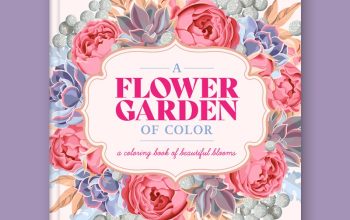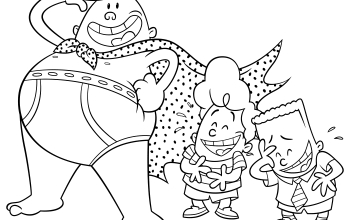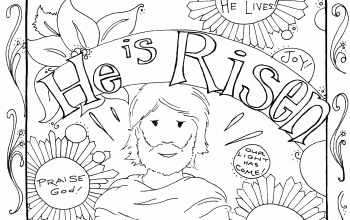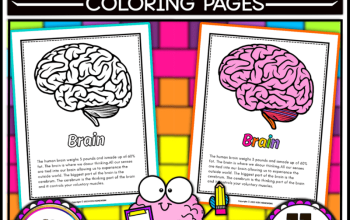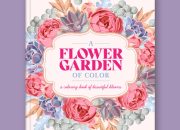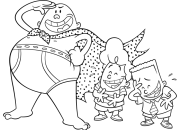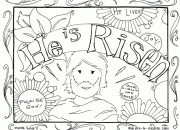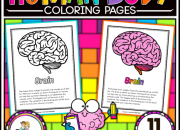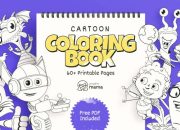Comic Book Coloring Techniques

Comic book example coloring – Comic book coloring is a crucial aspect of visual storytelling, significantly impacting the mood, atmosphere, and overall aesthetic of a comic. Different styles and techniques are employed to achieve diverse artistic effects, ranging from the vibrant and stylized to the photorealistic and nuanced. The choice of coloring style often reflects the genre and tone of the comic itself.
Comic book example coloring often focuses on bold lines and vibrant, flat colors. However, for a more intricate approach, consider the detailed designs found in creative haven coloring books ; their complexity offers a fascinating contrast. Applying this level of detail to comic book coloring could yield stunning, almost painterly results, adding depth and texture beyond the typical style.
Coloring Styles
Various coloring styles exist within the comic book industry, each offering a unique visual appeal. Cel-shading, a popular choice, utilizes flat areas of color with sharp lines defining the shapes and forms, creating a bold and graphic look often seen in animation and manga. Realistic coloring, on the other hand, strives for a more lifelike representation, employing subtle gradients, shadows, and highlights to mimic the effects of light and texture.
Other styles include painterly approaches that emphasize brushstrokes and texture, and more stylized techniques that might incorporate unconventional color palettes or abstract elements. The selection of a specific style is a creative decision influenced by the artist’s vision and the narrative requirements of the comic.
Applying Base Colors and Shading, Comic book example coloring
The process of coloring a comic book page typically begins with applying base colors to the line art. This involves carefully filling in each distinct area with the appropriate color, ensuring clean edges and avoiding bleed-over. Once the base colors are established, shading and highlighting are added to create depth, form, and dimension. This often involves using darker shades in areas where shadows would naturally fall and lighter shades where light would hit the surface.
The intensity and placement of these shades depend on the light source, the surface texture, and the desired artistic effect. Careful consideration of color temperature and contrast is essential to achieve a visually compelling result.
Digital Coloring Tools and Software
Digital coloring offers a range of advantages in terms of flexibility, control, and efficiency. Popular software includes Adobe Photoshop, Clip Studio Paint, and Procreate. These programs provide artists with a wide array of tools, including digital brushes that mimic traditional media like pencils, paints, and markers, allowing for a versatile approach to coloring. Features such as layers, blending modes, and color adjustment tools provide greater control over the coloring process, enabling artists to easily experiment with different effects and make precise corrections.
Digital tools also offer features like undo/redo functions and non-destructive editing, reducing the risk of mistakes and enabling greater flexibility in the creative process.
Traditional vs. Digital Coloring
| Feature | Traditional Coloring | Digital Coloring |
|---|---|---|
| Medium | Markers, paints, pencils, inks | Software (Photoshop, Clip Studio Paint, etc.) and tablet |
| Process | Manual application of color, often layer-by-layer | Digital application of color using various tools and techniques |
| Correction | Difficult and often messy to correct mistakes | Easy to correct mistakes using undo/redo functions and non-destructive editing |
| Flexibility | Limited flexibility in color adjustments and corrections | High flexibility with layers, blending modes, and color adjustment tools |
Color Palette Selection and Application: Comic Book Example Coloring

Choosing the right color palette is crucial in comic book coloring, as it significantly impacts the overall mood, atmosphere, and storytelling effectiveness. A well-selected palette can enhance the narrative, guide the reader’s eye, and create a cohesive visual experience. Conversely, a poorly chosen palette can confuse the reader, detract from the story, and even undermine the intended emotional impact.
Understanding color theory is fundamental to mastering this aspect of comic book art.Color theory plays a vital role in creating visually appealing and emotionally resonant comic book pages. It provides a framework for understanding how colors interact, creating harmony or contrast, and evoking specific feelings. By skillfully manipulating color temperature (warm vs. cool), saturation (intensity), and value (lightness vs.
darkness), colorists can build depth, create focal points, and subtly influence the reader’s perception of the narrative. For example, the use of warm colors like reds and oranges often conveys feelings of excitement, danger, or passion, while cool colors like blues and greens can evoke feelings of calmness, sadness, or mystery.
Effective Color Palettes in Different Comic Book Genres
Different genres benefit from distinct color palettes. Superhero comics often employ vibrant, saturated colors to reflect the heightened reality and action-packed nature of the stories. Think of the bold primary colors frequently used in classic superhero comics, or the more nuanced palettes used in modern titles that blend vibrant hues with darker, more atmospheric tones. In contrast, horror comics might utilize desaturated colors, muted tones, and a darker overall palette to create a sense of unease and dread.
A noir comic, for example, might rely heavily on deep shadows, muted blues and greens, and strategically placed highlights to enhance the atmosphere of mystery and suspense. Slice-of-life comics often use softer, more pastel-like palettes to reflect the everyday nature of their narratives.
The Impact of Color Choices on Mood and Storytelling
Color is not merely decorative; it’s a powerful storytelling tool. Consider the use of color to highlight specific characters or objects, guiding the reader’s attention to crucial plot points. A shift in color palette can also signal a change in setting, time period, or even the character’s emotional state. For instance, a sudden shift from warm, inviting colors to cold, stark ones might indicate a character’s descent into despair or a change in the narrative’s tone.
The skillful use of color can subtly foreshadow events or create a sense of anticipation, heightening the reader’s engagement with the story.
Example Color Palette for a Specific Comic Book Scene
Let’s design a palette for a scene in a fantasy comic where a lone knight stands on a windswept cliff overlooking a stormy sea. The scene should convey a sense of isolation, impending danger, and quiet determination.The palette will consist of:* Dark desaturated blues and purples: For the stormy sea and the overcast sky, evoking a sense of foreboding and isolation.
Muted greens and browns
For the rocky cliff face, grounding the scene and adding a sense of ruggedness.
Deep, rich golds and oranges
Used sparingly, these colors will highlight the knight’s armor and create a focal point, representing both strength and the glimmer of hope amidst the storm. These warm tones contrast with the cool tones of the background, making the knight stand out.
Deep crimson accents
These will be used minimally, perhaps in a detail on the knight’s armor or in the reflection of the setting sun, to hint at the danger and potential bloodshed.This palette aims to create a visually striking scene that evokes the desired emotions and sets the stage for the unfolding narrative without overwhelming the reader with excessive color saturation.
The contrast between the cool and warm tones will draw the eye to the knight and highlight his isolation and resolve in the face of impending danger.
Tools and Resources for Comic Book Coloring
Choosing the right tools and resources is crucial for achieving the desired look and feel in your comic book coloring. The process can be approached digitally or traditionally, each with its own unique set of advantages and disadvantages. This section will explore the various tools and resources available for both digital and traditional comic book coloring, and guide you through preparing your artwork for each method.
Digital Coloring Software
Digital coloring offers flexibility, undo capabilities, and ease of correction. Several software options exist, each with its own strengths and weaknesses. Adobe Photoshop, for example, is industry-standard software offering unparalleled control and a vast array of features, but it comes with a significant price tag and a steep learning curve. Clip Studio Paint, a popular alternative, provides a more intuitive interface and a lower price point, while still offering a robust set of tools suitable for professional comic coloring.
Krita, a free and open-source option, is a powerful choice for those on a budget, though it may require more time to master its functionalities. The choice ultimately depends on your budget, technical skill level, and personal preferences.
Traditional Coloring Supplies
Traditional coloring relies on physical materials and techniques. A comprehensive approach requires several essential tools and supplies. This includes a range of high-quality colored pencils, markers (both alcohol-based and water-based), and paints (gouache, watercolor, or acrylics are common choices). Selecting the right paper is equally important; consider using heavier weight paper (at least 110lb/300gsm) to prevent bleed-through and warping.
Other useful items include a selection of brushes (synthetic and natural hair), a palette for mixing paints, masking fluid for protecting areas, and a kneaded eraser for precise corrections. The quality of your materials directly impacts the final result; investing in quality supplies will improve your work significantly.
Preparing Artwork for Digital Coloring
Before beginning digital coloring, proper preparation of your artwork is essential for a smooth workflow. Scanned artwork should be high-resolution (at least 300 DPI) to maintain detail and avoid pixelation. Cleaning up the line art is crucial; removing any stray marks or inconsistencies is essential for a professional finish. Consider using layers in your digital software to separate line art, flat colors, shading, and highlights, allowing for easy editing and adjustments.
This layered approach also enables non-destructive editing, preventing accidental damage to your original artwork. Finally, ensure your artwork is properly sized for your intended output (e.g., print or web).
Digital Coloring Tools and Brush Application
Visualizing the application of various brushes and tools is best done through description. Imagine a simple character sketch, perhaps a superhero with a cape. A hard-edged brush, such as a “round hard” brush in Photoshop, would be ideal for sharp, clean lines defining the character’s features. For the cape, a softer brush, like a “soft round” brush, can be used to create smooth, flowing gradients of color.
A textured brush, mimicking the look of a traditional painting medium, might be used to add depth and detail to the cape’s fabric, suggesting folds and movement. For highlights, a small, bright, hard brush could be used to create sharp, intense points of light. Airbrush tools, on the other hand, are excellent for creating soft, gradual transitions and fills of large areas.
The smudge tool is valuable for blending colors and creating a more natural look. Experimentation with different brush settings, such as opacity, flow, and size, will further enhance the artist’s control and the final effect. By combining these techniques, a range of visual effects can be achieved, from sharp and defined lines to soft and blended colors, all contributing to a rich and engaging final image.

